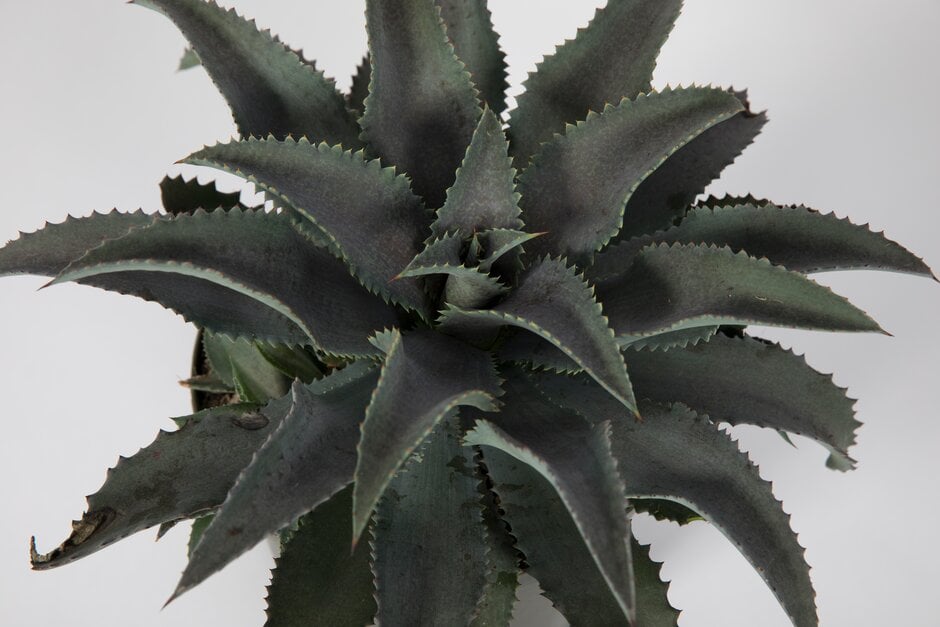Size
Ultimate height
0.1–0.5 metresTime to ultimate height
10–20 yearsUltimate spread
0.1–0.5 metresGrowing conditions
Moisture
Well–drainedpH
AcidColour & scent
| Stem | Flower | Foliage | Fruit | |
| Spring | Green Grey Silver White | |||
|---|---|---|---|---|
| Summer | Green Grey Silver White | |||
| Autumn | Green Grey Silver White | |||
| Winter | Green Grey Silver White |
Position
- Full sun
Aspect
South–facing or West–facing
Exposure
ShelteredDrought resistance
Yes Hardiness
H4Botanical details
- Family
- Asparagaceae
- Native to GB / Ireland
- No
- Foliage
- Evergreen
- Habit
- Bushy
- Potentially harmful
- Skin irritant. Wear gloves and other protective equipment when handling. Pets (dogs, cats): harmful if eaten. For further information and contact numbers regarding pets, see the HTA guide to potentially harmful plants
- Genus
Agave can be perennial or monocarpic succulents, forming rosettes of usually rigid, fleshy, spiny-edged leaves, with funnel-shaped flowers in racemes or panicles often much taller than the rosettes
- Name status
Accepted
How to grow
Cultivation
Grow under glass in cactus compost in full light. Water freely in summer, giving a low-nitrogen feed three or four times. Water less in autumn and keep dry in winter. Hardier than most agaves, and may survive outdoors in a warm position in very well-drained, slightly acid soil in full sun. See hardy cacti and succulent cultivation for further advice
Propagation
Propagate by seed. Dies after flowering and does not produce offsets
Suggested planting locations and garden types
- City and courtyard gardens
- Cottage and informal garden
- Patio and container plants
- Sub-tropical
- Gravel garden
- Conservatory and greenhouse
Pruning
No pruning required
Pests
May be susceptible to scale insects
Diseases
Generally disease-free
Love gardening
Sign up to receive regular gardening tips, inspiration, offers and more
View our Privacy Policy
Get involved
The Royal Horticultural Society is the UK’s leading gardening charity. We aim to enrich everyone’s life through plants, and make the UK a greener and more beautiful place.
.jpg)
